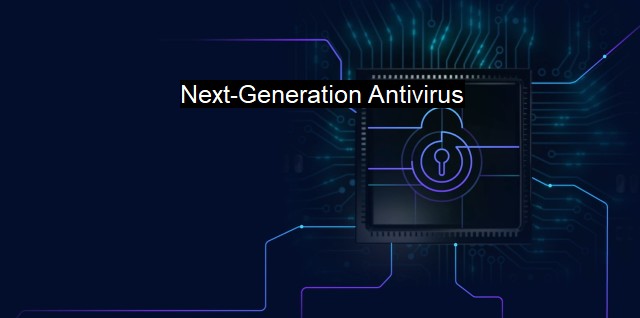What are Next-Generation Antivirus?
Next-Generation Antivirus (NGAV): Advancing Cybersecurity Capabilities in a Rapidly Evolving Digital Landscape
The face of cybersecurity is constantly evolving. One of the major challenges is the increased sophistication with which hackers and cybercriminals carry out their activities. Traditional antivirus solutions developed two or three decades ago no longer suffice; hence, the idea and importance of the Next Generation Antivirus or NGAV arise.Next-Generation Antivirus is a fresh and revitalised approach to combating cyber threats. A step beyond the scope of traditional antivirus solutions, NGAV integrates proactive techniques and strategies which can effectively combat and neutralize an array of budding and sophisticated cyber threats. These incorporate AI-powered techniques like machine learning, predictive analysis, and deep learning algorithms to evaluate files and threat vectors, ascertain patterns, and predict potential incidents before they actually transpire.
Rather than only focusing on signature-based detection method – as a traditional antivirus solution mainly does – the next-generation systems keep an open eye for anomalies, unusual patterns, and suspicious behaviours. These characteristics might depict an active malware trying to duplicate, corrupt, or exploit system vulnerabilities. Next Generation Antivirus software also gauges application behaviour in correlation to the host network, scanning and checking for any potential malware or attack manoeuvres.
Besides, the NGAV software invests considerable effort in determining post-breach activities. If under an attack, the NGAV would not only quarantine and disregard the infected files but also update its databases with thoroughly drawn metadata. Concurrent utilization of end-user interactions, virus databases, and threat libraries renders more holistic and context-driven analysis - an area traditional antivirus techniques often lag behind. The insightful threat data acquired can be crucial for future encounters of similar nature, signifying that NGAVs, to a large extent, incorporate a learning-based model.
Processes and information related to remediation are shared promptly with the administrator. The integration with log systems gives rise to timely warnings, alerts, and detailed analysis, permitting the cybersecurity teams to take predictive or proactive measures to alleviate possible damage.
Another strength that corroborates the indispensability of the Next Generation Antivirus is its ability to combat obfuscated threats. It does not merely focus on known vulnerabilities or system loopholes, rather, it is shrewdly operative towards threat actors and tactics that might be hiding beneath seemingly non-virulent programs or processes.
NGAV comprehends and highlights threats to not only individual workstations but to the overall threat to an organization's network security ecosystem. This disposition of NGAV makes them adaptable for enterprises where configurations and networks are huge and more complex.
NGAV employs a diverse defence strategy, which involves expecting the unexpected. Techniques of isolation, whereby potentially harmful processes are kept confined to stop further propagation of threat, or testing systems in a 'decoy' setting, also known as 'sandboxing', amplify the protective measures.
With the advent of NGAV, organizations now have the technological arsenal to combat evolving, intelligent breaches and threats—robust and intimidating defence mechanisms to outsmart malicious attacks.
To sum up, the Next Generation Antivirus is a significant leap from the rudimentary antivirus systems, chartering unfamiliar terrains with its advanced and proactive mechanics. Spearheaded by the daresay newfound aptitude to learn, adapt, predict and safeguard, NGAV serves as one of the cornerstones for a well-fortified cybersecurity protocol. The call of the hour is to comprehend, affiliate, and arm oneself with these complex, yet compelling measures. The future of cybersecurity unquestionably revolves around the convolution of artificial intelligence, machine learning, behemoth databases, and the ingrained capability of prediction, making NGAV forever pertinent in the cybersecurity narrative.

Next-Generation Antivirus FAQs
What is next-generation antivirus (NGAV)?
Next-generation antivirus is a cybersecurity solution that uses advanced techniques, such as machine learning, artificial intelligence, behavioral analysis, and cloud-based infrastructure, to provide better protection against modern threats than traditional signature-based antivirus. NGAV solutions are designed to detect, prevent, and respond to sophisticated attacks that can evade traditional antivirus.What are the benefits of next-generation antivirus?
Next-generation antivirus solutions offer several benefits over traditional antivirus, including better protection against zero-day and targeted attacks, improved visibility and control over endpoints, faster threat detection and response, and lower false-positive rates. NGAV also enables organizations to automate security operations and reduce the workload of security teams, which helps them to be more effective and efficient.What features should I look for in a next-generation antivirus solution?
When evaluating next-generation antivirus solutions, it's important to look for features such as machine learning and behavioral analysis, sandboxing, threat intelligence, cloud-based infrastructure, application control, and endpoint detection and response (EDR). These features can help to identify and block advanced threats, minimize the attack surface, and provide real-time visibility into endpoint activities for rapid threat response.Do I still need traditional antivirus if I have next-generation antivirus?
While next-generation antivirus provides advanced protection against modern threats, it's still important to have traditional antivirus as a baseline security measure. Traditional antivirus can catch known threats and provide an added layer of defense against malware and other types of attacks. Additionally, using both traditional and next-generation antivirus can provide a defense-in-depth strategy that minimizes the risk of endpoint compromise.| | A | | | B | | | C | | | D | | | E | | | F | | | G | | | H | | | I | | | J | | | K | | | L | | | M | |
| | N | | | O | | | P | | | Q | | | R | | | S | | | T | | | U | | | V | | | W | | | X | | | Y | | | Z | |
| | 1 | | | 2 | | | 3 | | | 4 | | | 7 | | | 8 | | |||||||